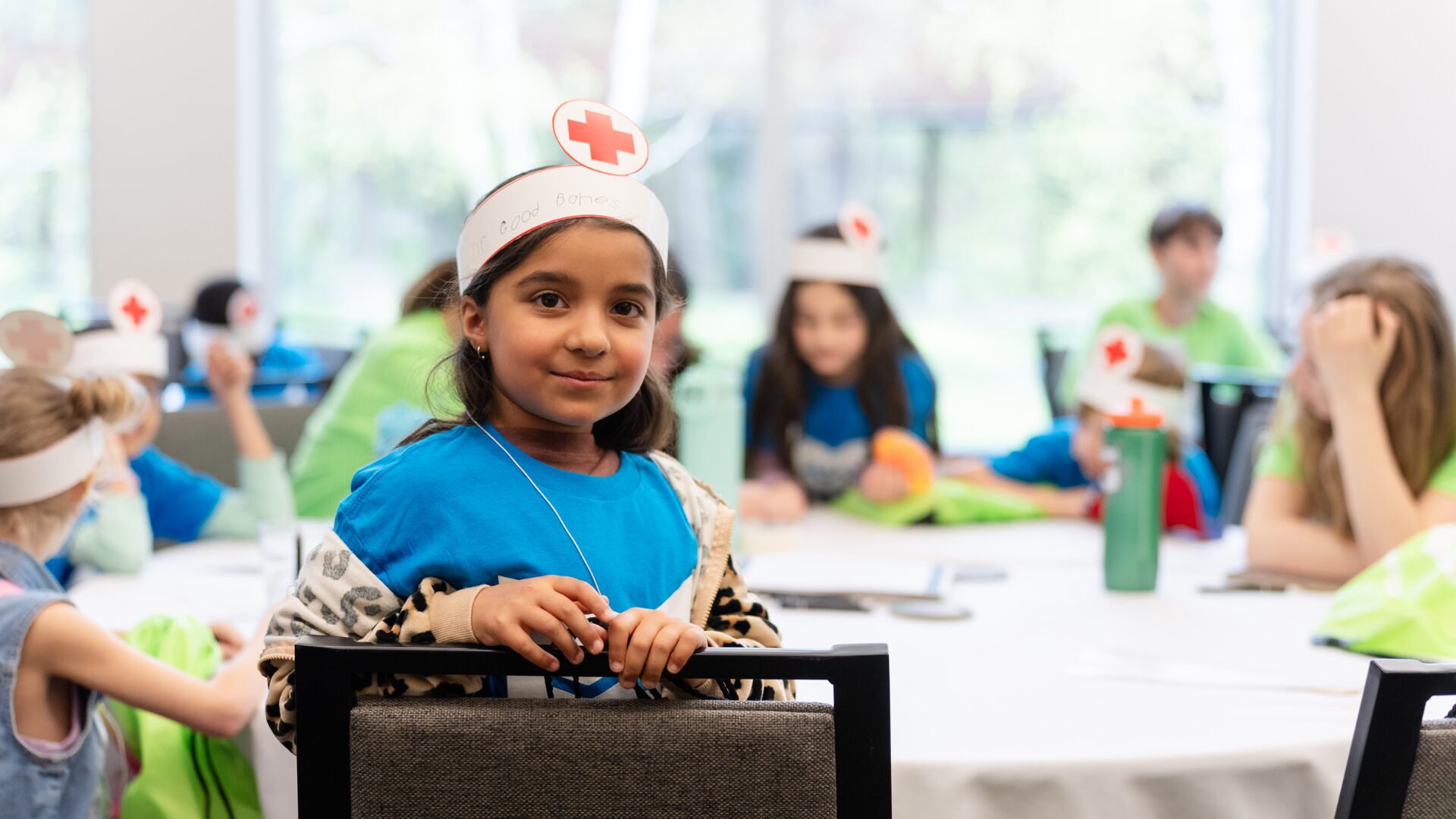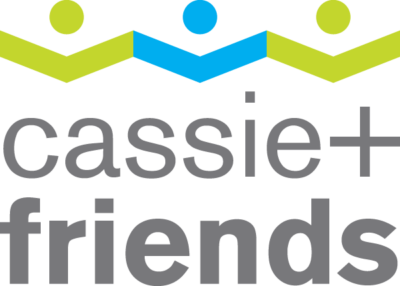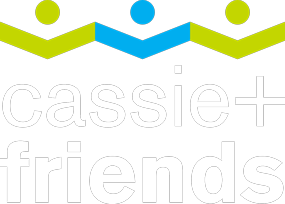
what is JIA?
Juvenile idiopathic arthritis (JIA) is the newest and preferred terminology to describe chronic arthritis in children. The disease is also sometimes referred to as juvenile arthritis (JA) or juvenile rheumatoid arthritis (JRA).
Let’s Break Down the Terminology….
Juvenile – In a young person (usually under 18)
Idiopathic – disease having no known cause or originArthritis – inflammation of a joint
Children under 17 years of age who develop inflammation in a joint (usually with swelling and/or pain and/or morning stiffness) that lasts longer than six weeks usually have JIA. There are seven different types of JIA, and the pattern of arthritis and the short-term and long-term effects of each type are different. We do not know the cause of any of the types of JIA. If the arthritis is associated with another disease such as lupus, dermatomyositis, inflammatory bowel disease or even leukemia, the arthritis is not known as JIA.
hear it from the kids
In Canada, Juvenile Idiopathic Arthritis (JIA) affects 1 in 1,000 kids. That’s over 10,000 kids in Canada alone living with Juvenile Idiopathic Arthritis. Check out the video below to learn more about what JIA is, directly from kids living with it.
quick facts
jia 101 webinar
Hear from parent speaker, Jennifer O’Shea, about her family’s journey with Juvenile idiopathic arthritis, from being diagnosed to pain management and treatments, and from Dr. Roberta Berard, as she shares information on the different subtypes of JIA, the difference between pain and a flare, and emerging research insights. Plus, answers to your questions regarding medications,
• (Lily’s Journey) Q 4:00- How did we know she had arthritis, what were the signs?
• (DR.Bobbi Berard) 14:50-15:25 Q What is Arthritis?
• Q 16:18- What is JIA?
• Q 17:50-Subtypes of JIA.
• 24:21-Kids don’t switch between categories
• 31:41- Treatment
• 34:50- Treatment basses on how many joints and other features.
• 39:40-Individualized medicine in JIA.
• 42:56-Up coming and ongoing studies in Canada.
• 46:00 Q/A
• Q 47:00-What does Lily understand about her condition now and how does she deal?
• Q 48:00- Does she share with her teacher and classmates at school?
• Q 48:55- Difference between pain and flair?
• Q 53:07- Is there a reason why diagnoses are delayed?
• Q 55:36- What doe Biologic mean?
• Q 57:32- Undifferentiated subtype and how it is treated?
• Q 59:00- Can someone have JIA and psoriatic arthritis: can you have two types at once?
• Q 1:01:41- Is there a History of arthritis in family- is there any evidence that it can be passed on?
• Q 1:04:34- Nutrition is there any food categories that increase inflammation?
• Q 1:11:11- What treatments that lily had to overcome?
• Q 1:14:55- Will kids ever grow out of arthritis?
• Q 1:20:28- Any gifts from the journey of arthritis?
additional resources
Arthritis Society and Club Sunrise: The Arthritis Society offers information on Arthritis camp, the Backpack program and additional learning resources such as Taking Charge of your JIA teen program. NEW! The Arthritis Society has added a new virtual event program for children ages 5-17 called Club Sunrise, learn more about it HERE.
About Kids Health: AboutKidsHealth is a health education website for children, youth and their caregivers from the experts at SickKids Hospital. The website offers a variety of Uveitis and JIA resources for parents and youth.
Systemic JIA Foundation: Information and resources specific to Systemic JIA.
f.a.q.’s
Questions answered by the Cassie + Friends Medical Advisory Committee including Pediatric Rheumatologists, Dr. Lori Tucker (BCCH), Dr. Nadia Luca (ACH) and Dr. Roberta Berard (LHSC). You can ask questions anytime and get connected to other affected families by joining our safe and secure Online Support Network! Don’t see your question? Click HERE for even more FAQs!
Children can get chronic arthritis – called juvenile idiopathic arthritis (JIA), previously known as juvenile rheumatoid arthritis – as well as other rheumatic diseases such as systemic lupus erythematosus (known as lupus or SLE), juvenile dermatomyositis, or vasculitis.
About 1 in 1,000 children have juvenile arthritis. This includes children with juvenile idiopathic arthritis (JIA) and those with other rheumatic or connective tissue diseases. If children with orthopedic and congenital problems that may develop into osteoarthritis in adulthood are included, then an average of one to five children in every elementary school have a chronic rheumatic disease.
Juvenile idiopathic arthritis is the newest and preferred terminology to describe chronic arthritis in children. Idiopathic means unknown cause or spontaneous origin. The disease is also sometimes referred to as juvenile arthritis (JA) or juvenile rheumatoid arthritis (JRA). Children under 17 years of age who develop inflammation in a joint (usually with swelling and/or pain and/or morning stiffness) that lasts longer than six weeks usually have JIA. There are seven different types of JIA, and the pattern of arthritis and the short-term and long-term effects of each type are different. We do not know the cause of any of the types of JIA. If the arthritis is associated with another disease such as lupus, dermatomyositis, inflammatory bowel disease or even leukemia, the arthritis is not known as JIA.
JIA is not the same as rheumatoid arthritis! In the United States, some forms of childhood arthritis are still somewhat inaccurately referred to as juvenile rheumatoid arthritis or JRA even though the pattern of arthritis and the short-term and long-term effects of most types of juvenile arthritis are completely different from rheumatoid arthritis in adults. Less than 5% of children with JIA have a subtype of arthritis that resembles rheumatoid arthritis.
A child with arthritis may have an obviously swollen joint, or he/she is stiff when waking up and might walk with a limp, or may have trouble using an arm or leg. Children do not always complain of pain because they may adjust the way they do things so that it hurts less, or they may simply ask to be carried more often. With some of the more serious types of JIA, children may also have a fever, a rash, or feel very weak and fatigued.
Arthritis is diagnosed by examination of the child by a doctor who has specialized training (or experience) in childhood rheumatic diseases. Preliminary evaluation should be by the family doctor or pediatrician, but the final diagnosis is ideally made by a pediatric rheumatologist. There are no blood tests or x-rays to confirm a diagnosis but these tests may be useful to determine the type of arthritis, to assess the severity, or to identify complications.
This is very difficult to predict at the outset, and to some extent, it depends on the type of JIA. In a small number of children, the disease may last as little as several months to a year and disappear forever. Most children, however, have an up-and–down course with “flares” and “remissions” for many years with about half of them continuing to have problems into adulthood. While there is no cure for juvenile arthritis, current available therapy often prevents the long-term damage and disability that may be left by arthritis even after it has gone.
Children with arthritis are not just kids with an adult disease. Although the drugs and therapies used to treat children are similar, the intensity of treatment and the frequency of follow-ups need to be much greater.
Unlike for adults with arthritis for example, physical growth may be stunted, children may grow one leg longer than the other, or one hand or foot may be smaller. Some children with arthritis can also have associated eye inflammation that can lead to blindness. These changes may be irreversible if there is a delay, or poor follow-up, in treatment. The impact of any chronic illness on psychological development, especially during adolescence, should not be underestimated as it can have lifelong recreational, educational, and career implications.
The best outcome for children with any rheumatic disease will be achieved by the involvement of a multidisciplinary team of health professionals such as those at BC Children’s Hospital. In this setting, children will have access to pediatric rheumatologists; specialized nurses, occupational and physical therapists, and social workers whose jobs are dedicated to treatment of children with rheumatic diseases. Other childhood and adolescent medical specialists are also available.
An excellent book is Your Child with Arthritis: A Family Guide for Caregiving by Dr. Lori B. Tucker, Bethany A. DeNardo, Dr. Judith A. Stebulis, and Dr. Jane G. Schaller.
When a child or teen with JIA has active disease, or a flare of disease, in joints in the legs (hips, knees, ankles, feet), it can affect their ability to walk. This is usually due to pain in the affected joints. At the time of JIA diagnosis, approximately 30-40% of children may have some trouble with walking, running, or ability to keep up with their usual activities. Our Canadian research data shows that the majority of children newly diagnosed with JIA can reach inactive disease by 6 months after diagnosis while on treatment- this means their arthritis is controlled on medication. Children with JIA whose disease is controlled on medication are able to walk, run, play sports and keep up with their healthy peers. Overall, in 2020, most pediatric rheumatology teams would see few children with JIA who are needing to use equipment such as crutches or wheelchairs for more than a brief time period.
There are many causes of joint pain in children and adolescents. Arthritis is one we are always on the lookout for. However, there are many other factors that may cause joint pain in children with arthritis and those without. One common example is hypermobility – when the joints are very flexible – which can be associated with some joint discomfort. Other potential causes of joint pain include patellofemoral syndrome (i.e. ‘loose’ knee caps), flat feet, ligament or tendon problems, or overuse. In children with JIA, there may also be some degree of joint damage that could result in persistent pain. There is also some evidence that children and adolescents with JIA can be sensitized to feel more pain because of the prior inflammation. Overall, it is important to bring up pain and other joint symptoms to your rheumatology team so that they can be evaluated and addressed appropriately.
Prednisone (corticosteroid) is a very effective and quick-acting medication that shuts down inflammation in a variety of conditions including arthritis, lupus and vasculitis. It is very beneficial for getting one’s disease under control and helping your child feel better quickly. However, it is associated with many side effects with long-term use. As such, our approach is to use prednisone for as short a time and at as low a cumulative dose as possible. We often will introduce a ‘maintenance’ treatment at the same as, or shortly after, starting prednisone that will eventually take over controlling the disease once prednisone has been weaned down. We often use the metaphor of ‘putting out a fire’ – prednisone is the big hose of water to put it out quickly, while the maintenance treatment helps to prevent the fire from recurring. Typically these treatments have less side effects than prednisone. Of note, it is very important that prednisone is not stopped abruptly, as your child’s body is not used to producing its own cortisol which can lead to problems.
Yes! As a pediatric rheumatology community, we are very hopeful about the effectiveness of our medications and physical rehabilitation as we are successfully able to achieve remission for the majority of our patients. Recent data from research on Canadian children with arthritis has shown that more than 75% of patients will be in remission within 2 years of diagnosis and depending on the subtype this number may be higher. Furthermore, one half of patients are able to stop medications within 5 years of diagnosis. Depending on the subtype, however, some children will have to restart medications within 1-2 years of stopping them because of disease flare. This risk is highest in patients with polyarthritis who have a positive rheumatoid factor; 2/3 of these patients will have to restart medications within the year of stopping. The goal for each patient is to achieve disease remission and thrive in their physical, social and emotional development. For some patients, this will be whilst taking medications long term but for others this may be achieved with medications and maintained after stopping medications. Being able to predict which children will be able to successfully stop medications particularly biologics is an active area of research in our community.
There are many causes for disease flares in JIA which may include changes in medications including interruptions or delay. Emotional, social and physical stressors may be important in disease flares. A potential association of puberty and hormonal changes and disease flare has not been evaluated formally in a research study. As such, at this time we do not have evidence that hormonal changes are related to JIA flares. There are many causes for joint pain that are separate from inflammatory joint disease. It is possible that hormonal changes may be associated with joint and muscle aches.
Involvement of the TMJ joint is very common in JIA and is most often without symptoms like pain or stiffness. Most commonly, a pediatric rheumatologist notices changes in the movement of the TMJ or growth of the jaw bones which prompts an evaluation for TMJ disease with an MRI. TMJ involvement does occur in oligoarthritis but would be more commonly seen in polyarthritis patients. How to best diagnose, treat and monitor TMJ arthritis is an active area of research in pediatric rheumatology. At this time, our approach is to treat the TMJ if it is significantly inflamed with medications including DMARDs (e.g. methotrexate) +/- biologics to attempt to decrease the risk of long-term complications. This could include facial bone growth abnormalities, need for orthodontics, oral surgery, chronic TMJ pain and sleep apnea. We also often seek advice from our dental colleagues regarding the need for a splint or other specific dental care.
There are 7 recognized subtypes of JIA, and ‘oligoarticular’ disease refers to children who have 4 or fewer joints affected at diagnosis. Some oligoarticular cases can ‘extend’ after 6 months to involve 5 or more joints while others ‘persist’ as oligoarticular. In terms of treatment, this is tailored to the specific patient situation. NSAIDS (naproxen) and cortisone joint injections are often used initially when few joints are affected. However if this is not sufficient for achieving remission, then a disease modifying anti-rheumatic drug (DMARD) — the most common of which is methotrexate – is typically added. The treatment may be the same, whether a child has either oligoarticular or polyarticular disease.
In our treatment of JIA, we often initially start with NSAID (e.g. naproxen) and may use corticosteroid joint injections for a few large joints. If this allows patients to achieve remission, then typically a disease modifying anti-rheumatic drug (DMARD) such as methotrexate is not required. However, if there is any residual disease activity after NSAID and injections (for example, in small finger or toe joints, or jaw [TMJ]) then a DMARD would be indicated. Also, if the joint injections don’t have a lasting effect, a DMARD may be beneficial. An advantage of using a DMARD is that it can also help to prevent additional joints from becoming affected by arthritis, and prevent joint damage in the long term.
It might be helpful to you to have a conversation with your child’s doctor to better understand how they are using the lab test results, and this might help you feel more comfortable that you don’t need to concentrate only on the numbers, and in understanding how medication decision-making happens.
For most of the medications that are used to treat children with arthritis (naproxen, methotrexate, biologics), medication levels are not tested in blood tests. The lab tests that are done are usually to monitor possible side effects, such as elevated liver function tests; standard practice is to check surveillance labs approximately every 3-4 months In most circumstances, the level of an inflammatory marker on a blood test would not be used as the sole reason for intensifying or decreasing medication. Deciding in changing medication would include knowing your child’s current symptoms and their physical examination.
The information we have to date on use of biologic treatments in adolescents do not indicate that there should be any concern that these treatments affect puberty or development in any way. As your teen goes into his growth spurt, his doctors may change his doses to account for weight increase.
Both biologics and biosimilars are created in living cells. Biosimilars are drugs that are highly similar to an originator biologic that has already been approved by for use by regulatory bodies. This means that there cannot be any meaningful differences between the biosimilar and the reference drug with respect to effectiveness and safety. In order to establish biosimilarity, extensive analytical testing confirms matching of structure and function of the drug, followed by limited but targeted clinical trials in a patient population to demonstrate the same efficacy and safety. For approval of a biosimilar, it is not necessary to repeat studies in all the conditions for which the drug is used, as extrapolation is used for the other conditions for which the reference biologic is approved.
In university it can be easy to get overwhelmed with workload and focus solely on your school work rather than your body. There have been times where I took my medication late, or didn’t listen to my body in order to get work done. Although I thought this wasn’t a big deal, it caused negative effects in the long-run. I ended up experiencing flare ups, extra fatigue, and burnout. Thus, I recommend putting your health first, above all else. Make sure you stop on top of your medication schedule, and if something feels off, write it down in your notes (and include the date) so you ensure you’re documenting your health properly and can look at the progress of your symptoms. These notes will come in handy when you speak with your doctor and will help you recognize the result of your medication management. Additionally, if you feel tired and your body needs rest, listen to your body. Universities have accommodation measures in place for this exact reason.
The best piece of advice I can give is to A) coordinate with your doctor and a nearby pharmacy to have access to your medications while studying at university and B) research your university’s accommodation practices prior to starting at the university, or as soon as you can. In my case, I did not inquire about these accommodations because I felt like I didn’t need them. However, halfway through my first semester, I had a flare up and it affected my ability to write. Consequently, I was rushed into obtaining the required documentation from my doctor in order to get the accommodations before a long hand-written exam. However, once this process was completed, the accommodations were great. I received a “fluctuating condition” letter, which I can present to my professors if I need extensions for assignments because of my health. At the University of Ottawa, many accommodation measures are offered, depending on your needs. Some include a personal note-taker, extra time on exams, being able to type instead of hand write answers, getting deadline extensions, etc. These accommodations vary depending on your university, but it is definitely worth researching
We do not know if taking a biologic treatment for a longer period will influence the chance of a long lasting remission of disease. Each patient is very individual, and other factors, such as type of disease and previous flares, likely have influence over chance for disease remission off medications.
At present, it is not known what factors- symptoms, lab tests, or disease type- put a patient at higher risk of flare off medication. Your doctor is the best to evaluate whether the symptoms you describe are due to active inflammation, or perhaps due to other issues.
Yes, there are a new class of biologics that are oral, called JAK inhibitors. This includes a medication called tofacitinib (Xeljanz) that has been studied in children with polyarticular JIA. These medications will become more commonly used in a variety of diseases, and hopefully more available to children and teens.
At this time, most of the research for peptide-based therapies has been in animal models of rheumatoid arthritis with some promising results. More studies are needed in humans to determine whether these are feasible and effective treatments. Typically novel therapies are developed and tested in adults before they are studied in pediatric patients.
Biologics used to treat ERA include adalimumab (Humira or biosimilar), etanercept (Enbrel or biosimilar) and infliximab (Remicade or biosimilar). Some patients
with ERA have another associated condition like uveitis or inflammatory bowel disease. In these cases, this would affect which biologic you would select in discussion with your health care team.
The natural history of arthritis is that it comes in flares, so it is not uncommon to have a flare-up
after remission, especially if you have stopped treatments. Most patients go back into
remission. Sometimes you need to change or adjust your current treatment regimen. If you
stop a medication and get a flare-up, most patients go back into remission after the previous
medication is restarted.
looking for information about other childhood rheumatic diseases?
We have resources pages to help you learn about a variety of diagnoses! Click the links below to learn more.
CRMO Fever Syndromes Vasculitis Juvenile Dermatomyositis Lupus
from our community
My Life with PFAPA: Kai’s Story
Life with PFAPA: Kai’s Journey from Diagnosis to Now We’re honoured to share a guest blog from one of our incredible youth in the community, Kai. Diagnosed with PFAPA at just seven years [...]
Navigating Morphea – Michelle’s Story
Navigating Morphea – Michelle’s Story For most of my life, I’ve had Morphea. Starting as a red mark on my chin as a young child, it eventually turned darker [...]
Living with JIA – Lisa’s Journey
Living with JIA – Lisa’s Journey It started out as sharp pain in my hips which I believed to be a pulled muscle; however, it soon progressed into a [...]







